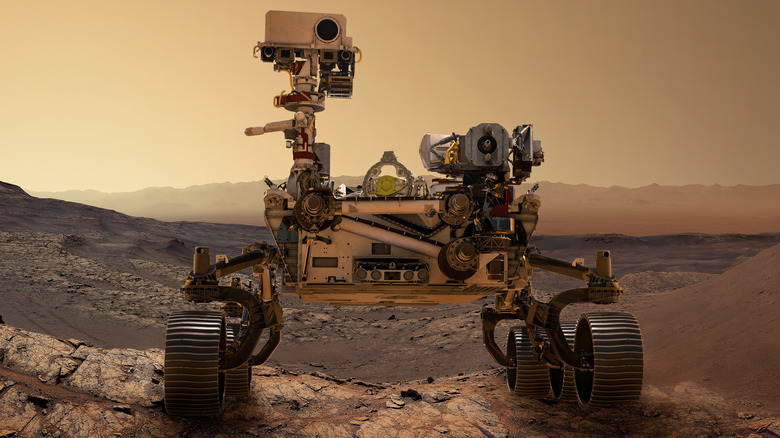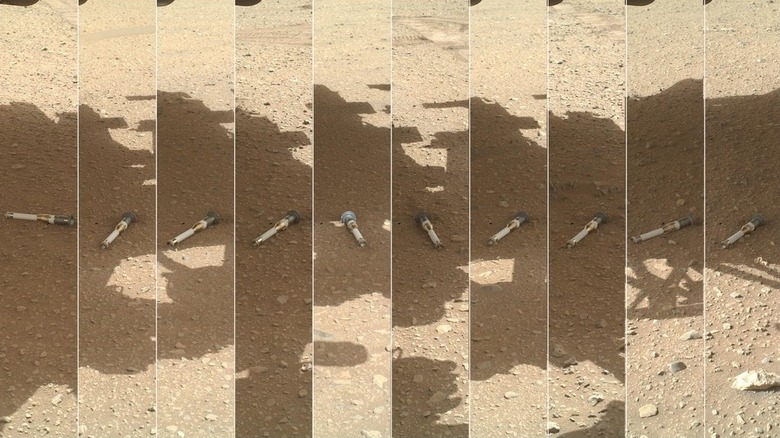Why These 10 Samples Collected By NASA's Perseverance Rover On Mars Are So Important
Thanks to Mars rover missions like NASA's Perseverance and Curiosity, we're learning more about the Red Planet than ever before. One of the biggest questions that researchers have about Mars, which the Perseverance rover is specifically intended to investigate, is whether there could ever have been life on the planet. Researchers are pretty certain that there's nothing living on Mars now, but there could have been microbial life there billions of years ago when there was still liquid water present on the planet's surface.
To understand the history of Mars, a rover like Perseverance is an important tool. It can perform investigations using instruments like spectrometers to understand the composition of rock samples, and it can use its cameras to image the areas those samples were taken from and see whether there are useful geographic features like layers that can give a clue to the area's past. By looking at layers of rock, scientists can see different periods in Mars' history and learn about things like the climate or temperature during different time periods.
But if we want to really understand more about the history of Mars, and especially whether there was ever life there, we need to get samples off the planet and back to labs on Earth where they can be examined in more depth. That's the aim of NASA's Mars Sample Return mission, which plans to transport samples from Mars to Earth for further study in the 2030s. The plan for the Mars Sample Return mission involves a small rover called a Fetch Rover, one or more sample recovery helicopters, and the first rocket to take off from another planet.
Collecting the sample tubes from Mars
All of this is in aid of bringing these samples of Mars rock and dust back to Earth — but first, these samples have to be drilled and collected. That's part of the job of the Perseverance rover, which is currently collecting samples as it explores an area of Mars called the Jezero crater. Once the team working on the rover has selected an interesting target they want to sample, they use the rover's drill to bore into the rock and bring up rock matter. Then the rover collects this sample and seals it in a special air-tight tube to protect it, as detailed by NASA. These samples can then be left on the Martian surface, ready to be collected and eventually brought back to Earth.
The samples can't just be left lying around anywhere though. The NASA team needs to know exactly where each sample is in order to be able to retrieve it in the future, and the samples also need to be left in a flat, accessible area so that future helicopters will be able to access them safely. So Perseverance has been working to put together a "sample depot" where 10 of the samples it has collected so far can be stored. Each sample is near enough to the others to be easily accessible, but not so close that the locations could get mixed up. As of December 2022, the rover has carefully placed the 10 tubes in particular locations ready for their eventual collection. With the depot now ready, we're one step closer to having samples from another planet brought back to Earth for study.

